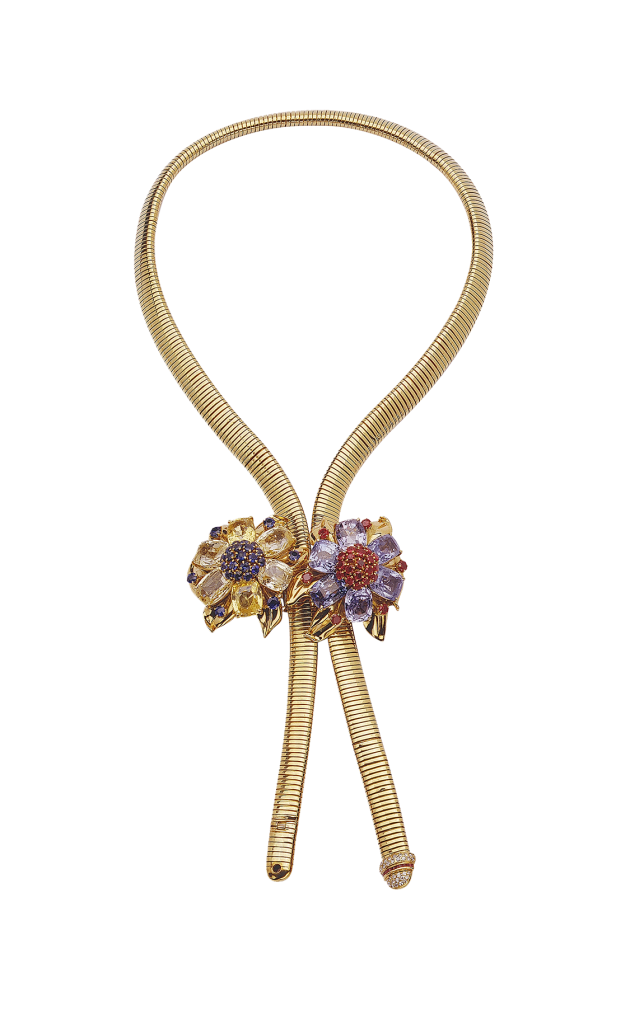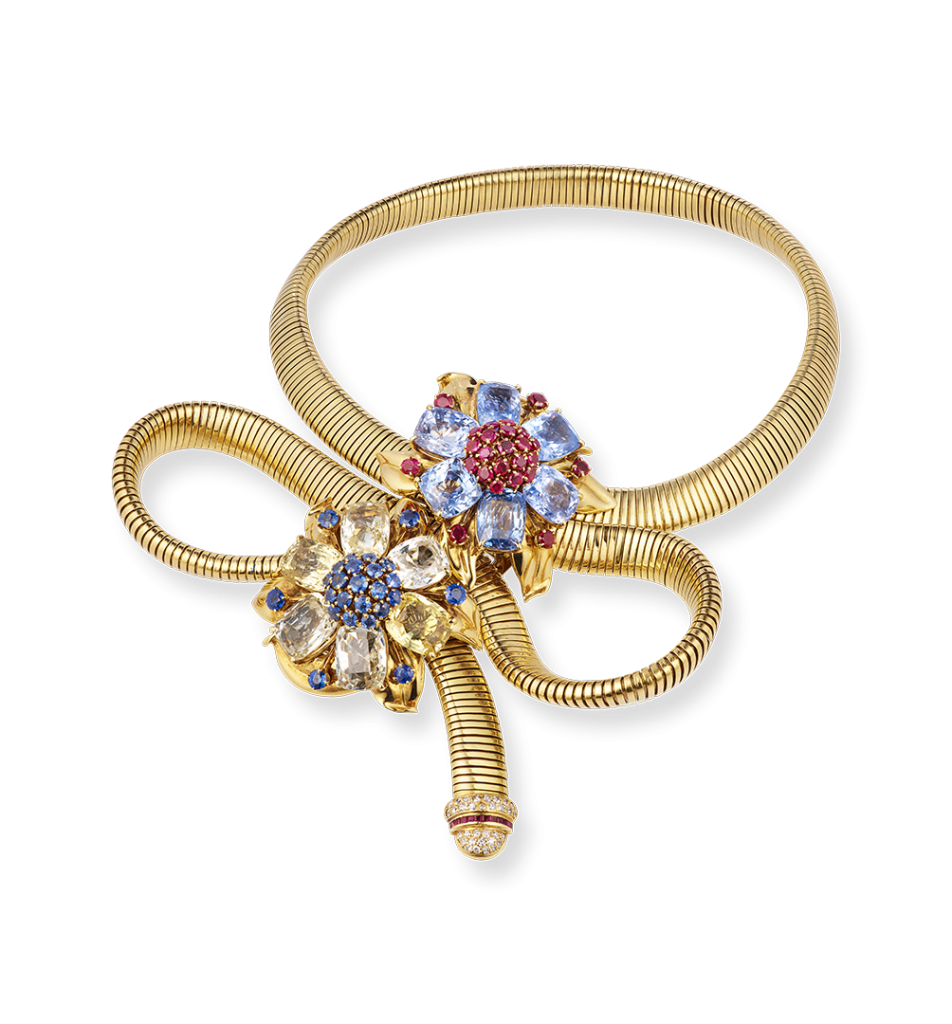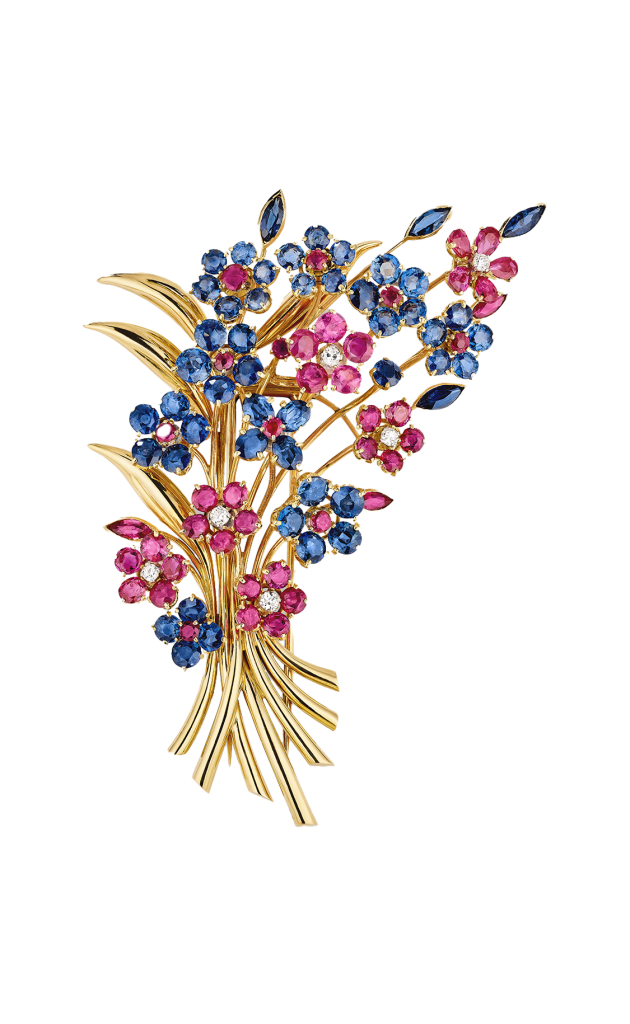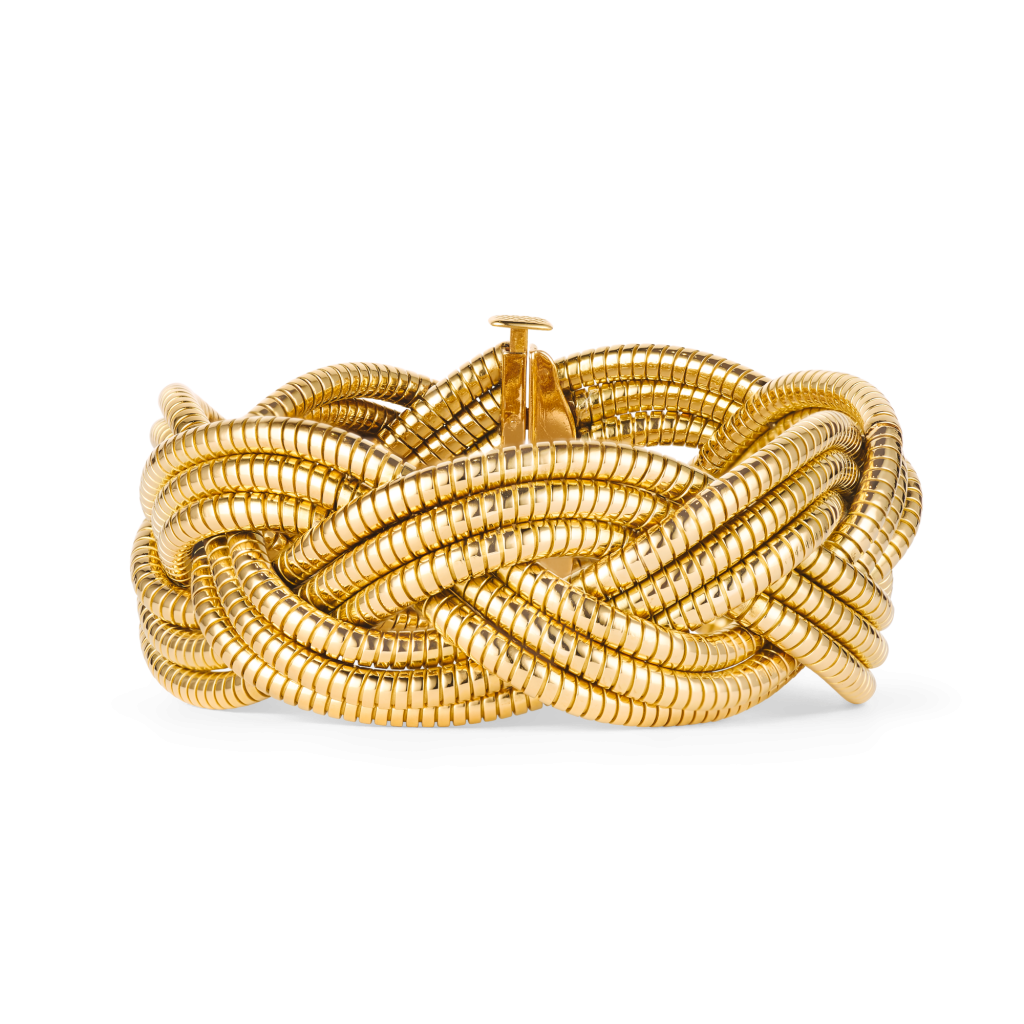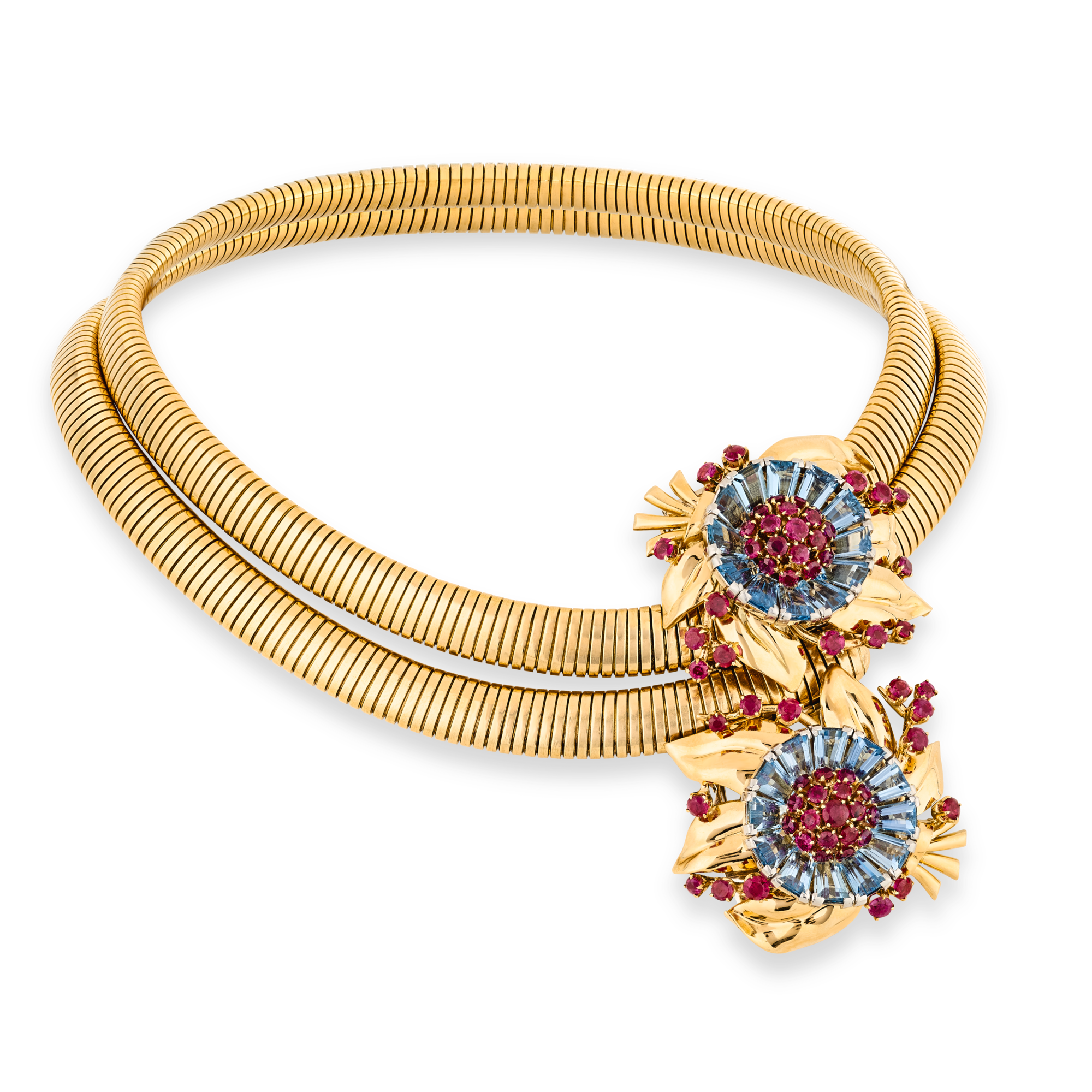
Passe-Partout jewelry




Creation details
- Creation year 1939
- Stone Aquamarine
- Stone Ruby
- Material Gold
- Material Platinum
- Usage Necklace
- Dimensions 650 mm
The Passe-Partout is a bold association of traditional floral iconography and Modernist functionality embodied by the Tubogas chain, and it revived the stylistic codes of jewelry.
It is a masterful example of transformable jewelry, producing many different ways of being worn, based on a simple formula. The Passe-Partout was patented in 1938 and is “composed […] of a flexible, snake-like ribbon” or “Tubogas,” and a “clasp”. The latter has “barrettes demarcating the […] channels” into which the ribbon slides, as well as a “series of wedges” to hold it in place “at different positions at various points along its length.”1Patent registration for “A piece of jewelry with multiple transformations,” by Van Cleef & Arpels, no. 834.209, February 24, 1938. Paris, INPI Archives.
This example from the Patrimonial Collection presents a Tubogas chain of yellow gold ending in a motif of pave-set brilliants underlined by calibrated rubies. The clasp, that holds the piece together, is composed of two stylized flowerheads, one with a center of claw-set rubies and six oval blue sapphires for petals, the other with a center of blue sapphires and yellow sapphire petals. Both are surrounded by yellow gold leaves with a polished finish and central vein that give a sense of volume and contour. They are also decorated with simple buds in the form of round rubies and sapphires.
Passe-Partout jewelry
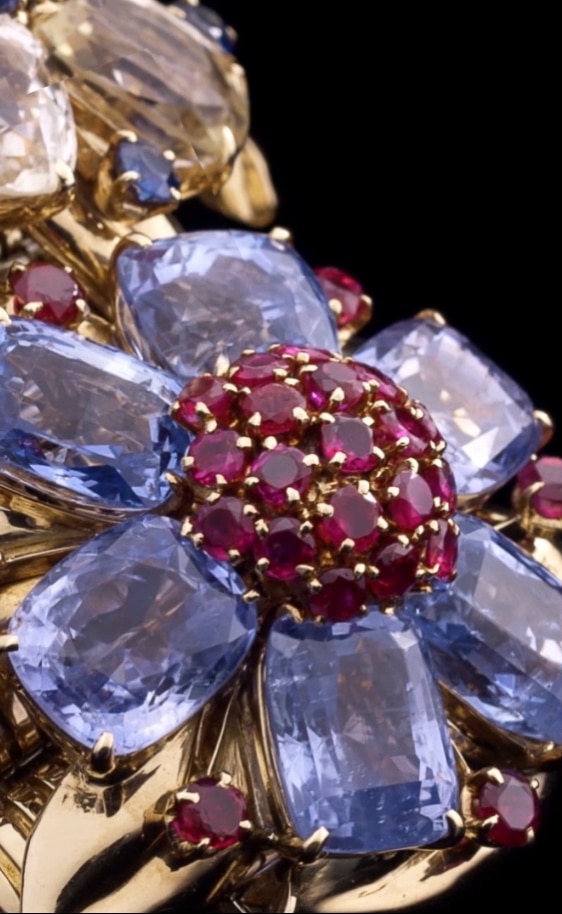
Various combinations of jewels
This invention gave “the jewelry many different uses.” The name “Passe-Partout” (literally “pass everywhere”), registered on March 8, 1939,2Registration of the “Passe-partout” trademark, no. 300123, by Van Cleef & Arpels, March 8, 1939. emphasized its transformable nature: “This is Passe-Partout jewelry […], which allows for all manner of combinations depending on how it is worn.”3Femina (April 1934): 29.

Thus, if the “ribbon [is] only threaded through the clasp once […], it forms a double-row necklace […] and its end [constitutes] a sort of pendant.” If it “is threaded through the clasp several times, [it] forms […] a multi-row bracelet.” The Tubogas was used as a “belt for the waist” and the clips could be detached from the metal ribbon and worn on their own. The Passe-Partout could also be worn just once round the neck with the rest of the ribbon looped through the clasp several times to form a bow.
An historicist piece
Bouquet clip

It contrasts with the Tubogas mesh derived from the industrial world—in this instance, a gas pipe. The Passe-Partout provided an eloquent synthesis of Modernist precepts, established during the 1930s, and the emergence of a historicist trend. Bringing one decade to an end and heralding in the next, it was the jewelry creation chosen to represent the Maison for the New York World’s Fair in 1939.

To go deeper


